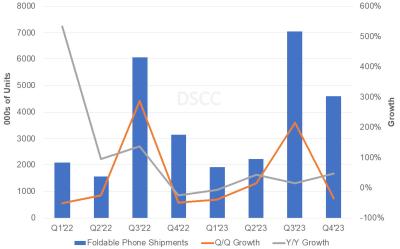Google launches three new smartphones, a foldable phone and a new smartwatch all powered by AMOLED displays
Google announced five new devices, all powered by AMOLED displays. We'll start with the Pixel 9 smartphone series, with the plain Pixel 9 offers a 6.3" 120Hz 2,700 nits (peak) 1080x2424 AMOLED display, a Google Tensor G4 chipset, 12GB of RAM and 256 GB of storage. The Pixel 9 Pro offers a 6.3" 3,000 nits (peak) 120Hz 1280x2856 LTPO AMOLED, and up to 16 GB of RAM and 1 TB of storage. The Pixel 9 Pro XL offers a similar but larger display - 6.8" 1344x2992 LTPO AMOLED.
Google's Pixel 9 Pro Fold smartphone is based on a 8" 120Hz 2,700 nits (peak) 2076x2152 foldable LTPO AMOLED display, and an external 6.3" 120Hz 1080x2424 AMOLED. The Pixel 9 Pro Fold is powered by a Google Tensor G4 chipset, and offers up to 16GB of RAM and up to 512GB of storage.








